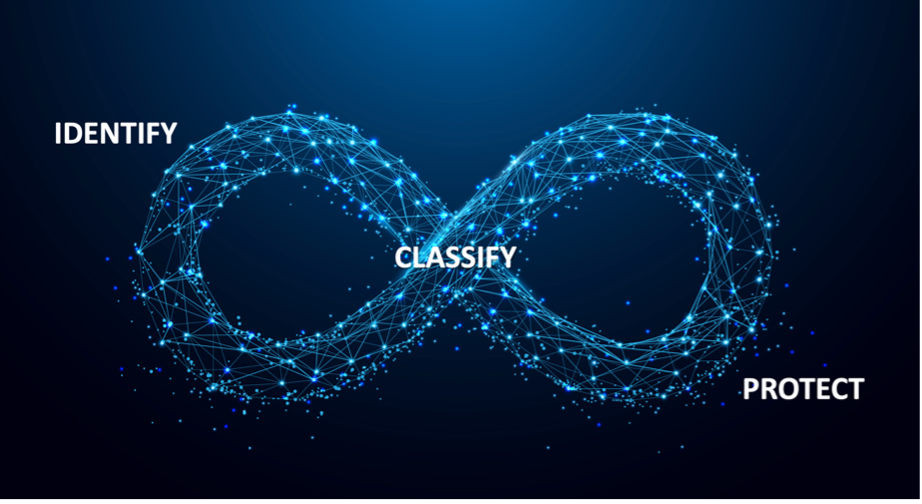What is data classification
Data classification is the process of categorising data and information based on its sensitivity and criticality.
There are many ways businesses can choose to classify data. Most use a four-level schema similar to the one below:
- Public — information is available in the public domain, access is not generally restricted
- Private (or Internal) — information for internal use only, access is restricted to internal personal and authorized third-parties
- Confidential — information that is sensitive, access is restricted to authorized individuals
- Restricted — information that is highly sensitive, access is restricted to a limited number of named individuals
How to classify information
Before organizations can classify their information, they need to know what data they have. Using a data discovery solution across the business to identify data across the business ensures all data can be identified ready for classification.
With a comprehensive data inventory, businesses can begin to evaluate their data and classify it. It’s important that the right stakeholders are involved in this process; typically, data owners and the primary users of the data should be engaged.
When classifying data, it’s important to consider:
- Whether the data is personal/personally identifiable information (PI or PII) or sensitive personal information
- How valuable the information is to the organization
- How critical the information is to the business
- What the impact could be if the data was leaked, lost or stolen
In the case of PII data especially, it’s also important to understand what its used for. This helps identify information that is no longer needed, or where its purpose can’t be justified, making it a candidate for disposal.
How data classification supports better data security
Each level of data classification establishes the level of control needed to protect the data. It helps businesses identify their most valuable and sensitive information and enables them to direct resources and prioritize security efforts to protect it. It also prevents organizations spending time and effort securing information that is a very low risk.
Data classification and the labelling of data that comes with it also ensures businesses can maximize the benefit of any data loss prevention (DLP) tools they have. The effectiveness of DLP solutions depends on the quality of the classification and labelling of data assets. DLP tools rely on this information to filter and block data as it moves in and out of the organization.
Building your data classification strategy
An effective data classification strategy comprises three main stages in a continuous cycle.
- Identify the data you have across the business using evidence-based discovery, whether on-prem or in the cloud, or in structured or unstructured formats
- Classify the data according to its sensitivity and value to the organization with input from data owners and its primary users
- Protect the data based on its classification
Because organizations generate and take in more data all the time, this should form a continuous, repeatable process.
Advanced data discovery and data management solutions like Ground Labs’ Enterprise Recon support scheduling and automation and integrate with Microsoft Purview to simplify the identification and classification process, while in-built remediation tools deliver protection to sensitive and high-risk data.
Request a data risk assessment and elevate your data classification strategy today.

